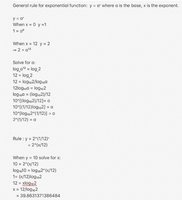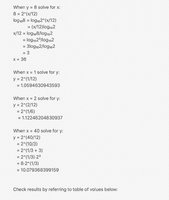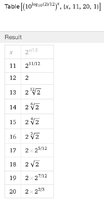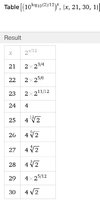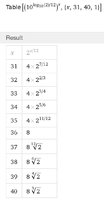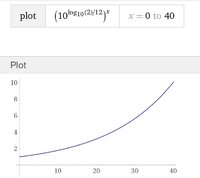KmwdoaWNDW
New member
- Joined
- Dec 12, 2019
- Messages
- 5
I've been given a table of x and y values that correspond to an exponential function.
The task is to write down the function and fill in the missing spaces in the table.
I tried asking my tutor for help, but he couldn't help me either.
FYI: I have not yet done anything with logarithms in class so there should be a solution without.
Here's the table:
Thanks in advance!
The task is to write down the function and fill in the missing spaces in the table.
I tried asking my tutor for help, but he couldn't help me either.
FYI: I have not yet done anything with logarithms in class so there should be a solution without.
Here's the table:
| x | 0 | 1 | 2 | 12 | |
| y | 1 | 2 | 10 |
Thanks in advance!

